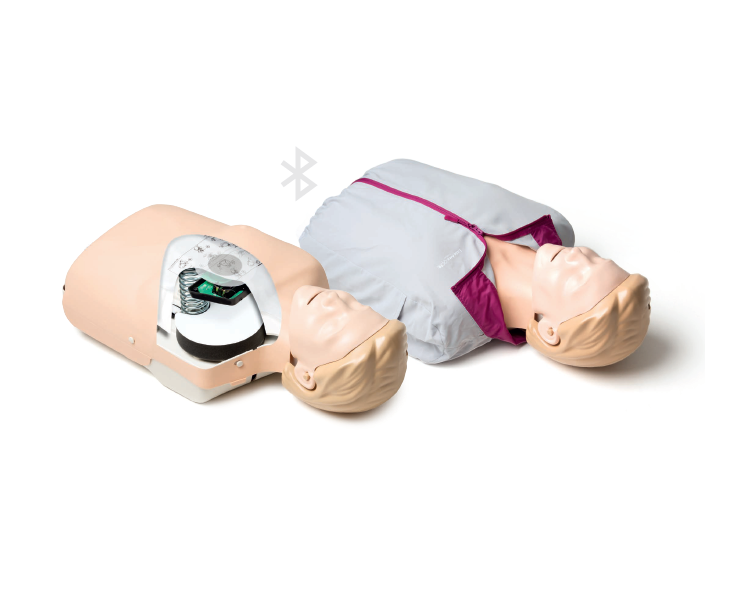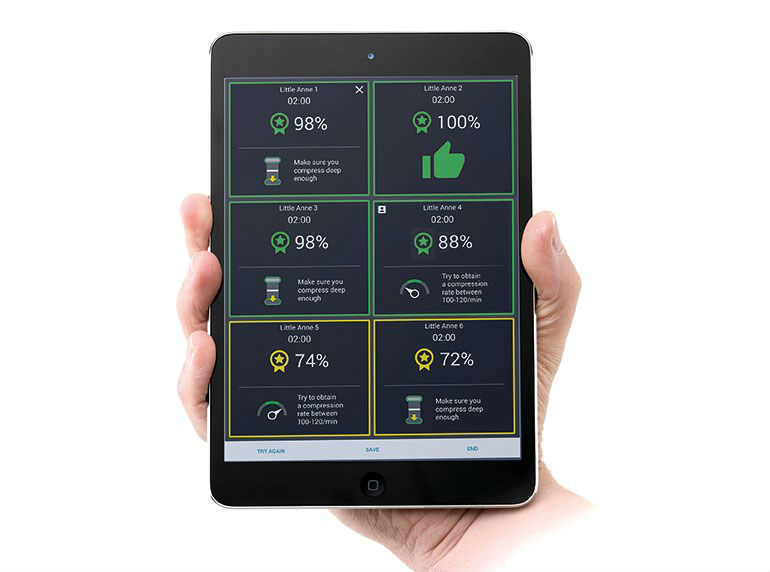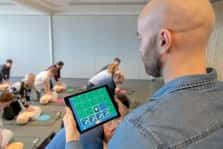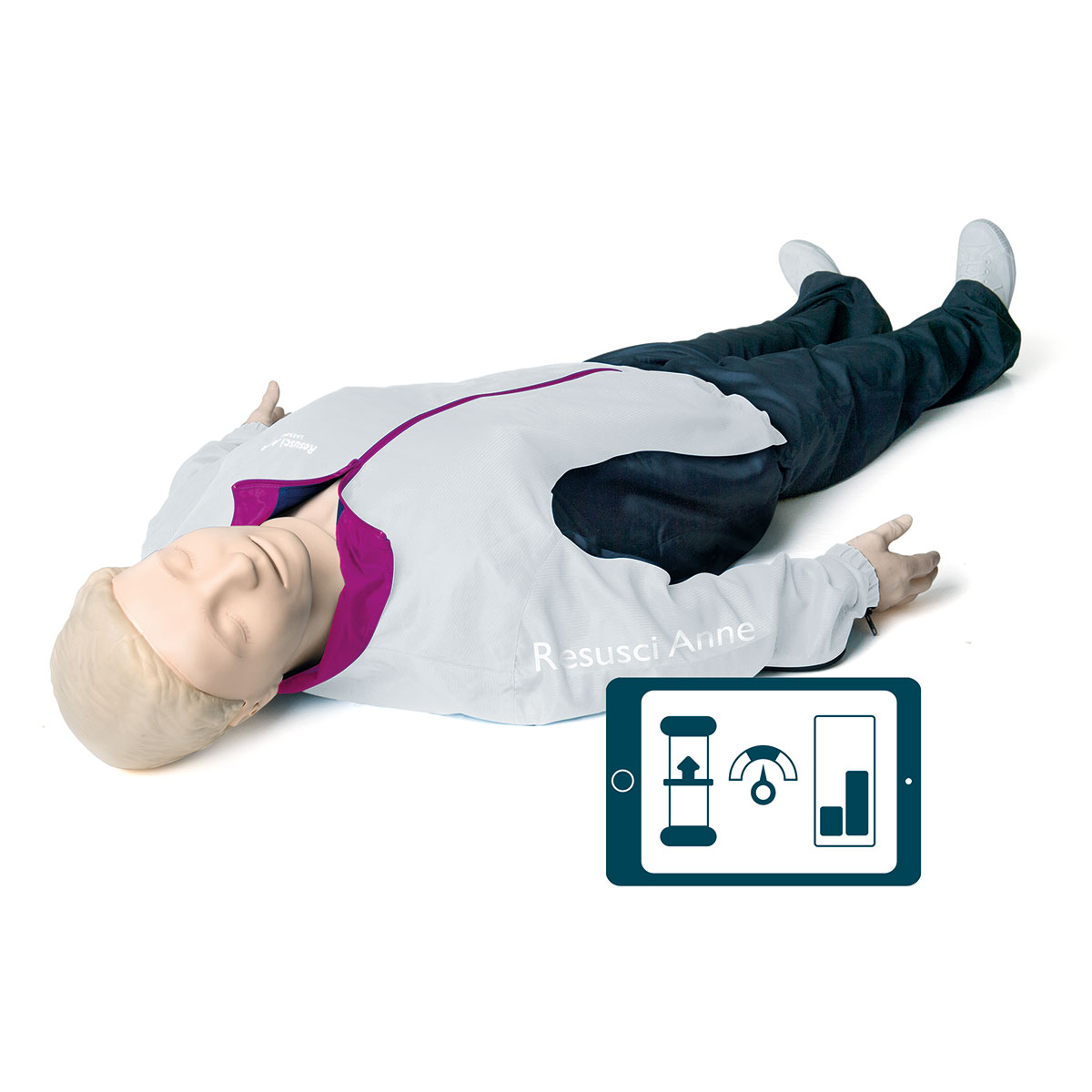VIDEO: The best way to end a CPR training session: With a race
1:16
Now with QCPR feedback technology, to help instructors improve CPR training quality, efficiency, and learner engagement.
We know CPR training creates lifesavers. But for years it has been a challenge for instructors to provide accurate and objective feedback on students performance. Until now.
Little Anne QCPR is now available with a gaming element and feedback technology. This helps instructors improve both CPR training quality, classroom efficiency and learner engagement.

Correct manikin anatomy
Life-like anatomy
Perform nose-pinch, head tilt, chin lift and jaw thrust to see chest rise. Anatomically correct oral and nasal passages.
Correct pressure
See and hear that compressions are done correctly. A built-in clicker signals when the correct compression depth is achieved.
Quick & easy maintenance
Clean-up is easy with disposable lungs and removable faces. Made with Laerdal’s patented design and materials; it’s built to last.

Guidelines compliant apps for quality learning
Real-time CPR feedback
Check how every learner is performing with feedback on depth, release, rate and ventilations.
Intelligent scoring and guidance
Give every learner tips on performance and improvements with intelligent scoring functionality. Motivate learners to go from from “passed” to perfection.
QCPR race competition
Finish every training session with an informal and fun QCPR race. Let learners experience what it’s like to perform CPR in high-tension situations with adrenaline flowing.
Rock solid connection
Connect every manikin to the instructor app with stable and reliable one-click Bluetooth Smart connection. Built-in tutorials and how-to videos.

QCPR App
One app to control and get feedback from QCPR manikins and Laerdal AED Trainers. Available on the App Store and Google Play
SkillGuide
A small, portable, and lightweight plug-and-play feedback device.
Learn more about SkillGuide

QCPR Classroom
Connect and control up to 42 learners in one training session.
Learn more about QCPR Classroom
QCPR Training app works with:
QCPR Classroom app works with:
The QCPR Training app and QCPR Classroom app cannot both be connected to the manikin at the same time.


Upgrade your old Little Anne to include QCPR feedback technology.

Old manikin? no problem.
You can now upgrade your old Little Anne to include QCPR feedback technology.
Available for models manufactured after February 1999.